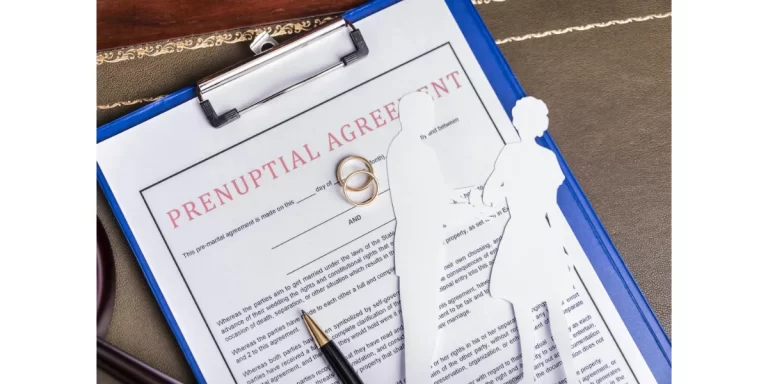A property caveat is a legal document that provides notice that a person or entity has an interest in a particular property.
It operates as a warning or caution to others, particularly potential purchasers or lenders, that someone claims a right or interest in that property.
This can include interest through an agreement for sale, a mortgage, an option to purchase, an easement, a lease, or some other contractual arrangement.
When a caveat is lodged against a property, it usually prevents the registration of other interests against the title to the land without the consent of the person who lodged the caveat.
In effect, it places a kind of ‘hold’ on the property, preventing the owner from selling it, transferring it, or using it as security for a loan (like a mortgage) until the issue is resolved or the caveat is withdrawn.
The person who lodges the caveat (the caveator) must have a ‘caveatable interest’. In property law, an “interest” in a property caveat refers to a legal claim or right asserted by a party to prevent the transfer or dealing of the property without their consent. This usually means a legal or equitable interest in the land. With more, it is enough to have a financial interest, such as being owed money by the landowner.
Property Caveats Legislation in Australia
The rules and procedures governing the lodgment, effect, and removal of property caveats are primarily determined by the state or territory’s real property or land titles legislation.
Here is an overview of the specific legislation that applies in each state and territory:
- New South Wales (NSW): The relevant legislation is the Real Property Act 1900 (NSW).
- Victoria (VIC): The Transfer of Land Act 1958 (VIC) governs the use of caveats.
- Queensland (QLD): Caveats in Queensland are governed by the Land Title Act 1994 (QLD).
- Western Australia (WA): The Transfer of Land Act 1893 (WA) applies.
- South Australia (SA): The relevant legislation is the Real Property Act 1886 (SA).
- Tasmania (TAS): The Land Titles Act 1980 (TAS) covers using caveats.
- Australian Capital Territory (ACT): The Land Titles Act 1925 (ACT) governs caveats.
- Northern Territory (NT): Caveats in the Northern Territory are covered under the Land Title Act 2000 (NT).
These laws outline how to lodge property caveats, the types of interests that can be claimed under a caveat, the effects of a caveat on a property transaction, and the process for removing a caveat, among other things.
When Can You Put a Caveat on a Property?
You can lodge a caveat on a property when you have a legitimate interest or right concerning that property which is not yet formally recorded or recognised. This interest might stem from various legal or financial arrangements, such as:
- An agreement for sale is where you’ve agreed to buy the property, but the sale has not yet been completed.
- A financial agreement or loan where the property was used as security.
- An equitable interest, for example, is if you’ve contributed significantly to the purchase price or the improvement of the property without being the registered owner.
- A lease or an easement that grants you certain rights over the property.
Also read: Selling Property Before Finalising Divorce in Australia
Can You Put a Caveat on Someone’s Property if They Owe You Money?
Yes, if someone owes you money and this debt is connected to the property in some way, such as being secured against it, you may have the grounds to lodge a caveat. However, simply being owed money does not automatically give you the right to put a caveat on someone’s property. There must be a direct link between the debt and the property, such as a written agreement indicating that the property is collateral for the debt.
How to Put a Caveat on Property?
The process of lodging a property caveat can differ slightly among states and territories, but the general process typically involves the following steps:
- Identify a Caveatable Interest: Before lodging a caveat, it’s crucial to establish that you have a legitimate, caveatable interest in the property. This could be due to an unpaid debt secured by the property, an equitable interest in the property, or other legitimate claims.
- Complete a Caveat Form: Each state or territory has a specific form that needs to be filled out to lodge a caveat. These forms often require detailed information about the property, the owner, the person or entity lodging the caveat (the caveator), and the nature of the caveator’s claimed interest in the property.
- Lodge the Caveat Form: Once completed, it must be lodged with the appropriate authority, typically the Land Titles Office or its equivalent in your state or territory. There is usually a fee associated with lodging a caveat.
- Notification: The property owner is typically notified after a caveat is lodged.
- Challenges and Removal: Once lodged, a caveat remains on the title until the caveator lapses withdraws, or is ordered to be removed by a court. If the property owner or any other interested party challenges the caveat, the caveator may be required to prove their interest in court.
- Legal Assistance: Due to the complexity of property law and the potential legal ramifications of lodging a caveat, it’s generally recommended to seek legal advice before proceeding with this action.
Once a caveat is lodged and accepted by the land registry in a particular jurisdiction in Australia, it appears on the Certificate of Title for the property.
The caveat will usually show details of the person or entity who lodged it (the caveator) and the nature of the interest they claim in the property.
This is designed to alert anyone who checks the title, such as potential purchasers or mortgagees, that a claimed interest may affect the property.
Also read: Who Pays The Mortgage After Separation Australia
How Much Does It Cost to Put a Caveat on a Property?
The cost to lodge a caveat varies by state and territory, reflecting the administrative fees charged by the Land Titles Office or equivalent body. These fees can range from $100 to $200, depending on the jurisdiction and the specific circumstances of the caveat lodgment. It’s essential to check the current fees with the relevant land registry in your state or territory.
Caveat Removal
A caveat can be removed. This can happen in several ways:
- Lapse: In some jurisdictions, a caveat may automatically lapse (become invalid) after a certain period unless the caveator takes further action, such as commencing legal proceedings to establish their claimed interest.
- Withdrawal by the Caveator: The person or entity who lodged the caveat can choose to withdraw it. This typically involves lodging a form with the land registry to remove the caveat officially.
- Order by a Court or Tribunal: If there is a dispute about the validity of a caveat, a court or tribunal may order that it be removed. This usually happens if the court or tribunal determines that the caveator has no legitimate caveatable interest in the property.
- Compulsory Acquisition: In some cases, the caveat might be removed due to a government authority’s compulsory land acquisition.
How Much Does It Cost to Remove a Caveat on a Property?
The cost to remove a caveat can vary, depending on whether it’s being removed voluntarily by the caveator or if legal action is required to be ordered by a court. If the caveator chooses to withdraw the caveat, there may be a nominal administrative fee charged by the land registry, typically similar to or slightly less than the fee for lodging a caveat. If the removal of the caveat involves court proceedings, the costs can be significantly higher, including legal fees and potential court costs.
What Happens When the Caveator Cannot Prove That They Have a Legitimate Interest in the Land?
If a person or entity (the “caveator”) lodges property caveats claiming an interest in a piece of land, they must be able to prove this interest. If they cannot, there can be serious consequences.
First, the caveat may be removed, either voluntarily by the caveator or following a court order.
In some jurisdictions, the Registrar of Titles may issue a notice to the caveator requiring them to commence court proceedings to establish their claimed interest.
If they don’t do so within a specified period, the caveat could lapse and be removed.
Second, if a caveat is wrongfully lodged (i.e., the caveator cannot prove a caveatable interest), the caveator could be liable for any loss suffered by the property owner or any other person.
For example, if the property owner could not sell their property due to the caveat and suffered financial loss, the caveator could be required to compensate the owner for this loss.
In some jurisdictions, lodging property caveats without reasonable cause can also be an offence, potentially leading to further penalties.
It’s crucial to note that the rules surrounding caveats and the consequences of wrongfully lodging a caveat can vary between different states and territories in Australia.
It’s a good idea to seek a property settlement lawyer’s advice if you’re considering lodging a caveat or a caveat has been lodged against a property you’re interested in.
Reasons to Put a Caveat on Property
Caveatable interests are paramount in property law because they provide a legal process for individuals or entities to protect their claimed rights or interests in a particular property.
- Protection of Interests: A caveatable interest is a legitimate legal or equitable interest in a property. When a caveat is lodged based on a caveatable interest, it protects the person or entity claiming it. This could be especially critical if the property owner attempts to sell, mortgage, or otherwise deal with the property in a way that could jeopardise the caveator’s claimed interest.
- Notification to Others: A caveat is a public notice that someone claims an interest in the property. This can prevent the property owner from dealing with the property without the knowledge or consent of the person who lodged the caveat and alerts potential purchasers or other interested parties about the claimed interest.
- Legal Consequences: If a caveat is lodged without a legitimate caveatable interest, it can have serious legal consequences, including potential liability for damages.
This underlines the importance of having a legitimate caveatable interest before lodging a caveat.
Do You Need Legal Advice on Property Caveats in Australia?
Property caveats are legal notices that can affect the sale or transfer of a property.
They can protect your interest in a property or prevent someone else from claiming an interest in your property.
However, they can also cause legal complications and disputes if mishandled.
At Justice Family Lawyers, we have the expertise and experience to help you with all your property caveat matters. Our property settlement lawyers can advise you on whether to lodge or remove a caveat, how to do it, and what to do if you face a challenge or a claim.
Contact us today for a free consultation and learn how we can help you with property caveats in Australia.
Principal of Justice Family Lawyers, Hayder specialises in complex parenting and property family law matters. He is based in Sydney and holds a Bachelor of Law and Bachelor of Communications from UTS.





